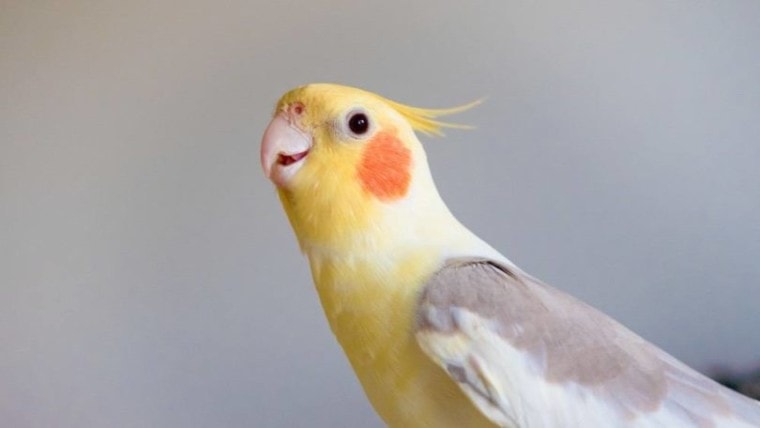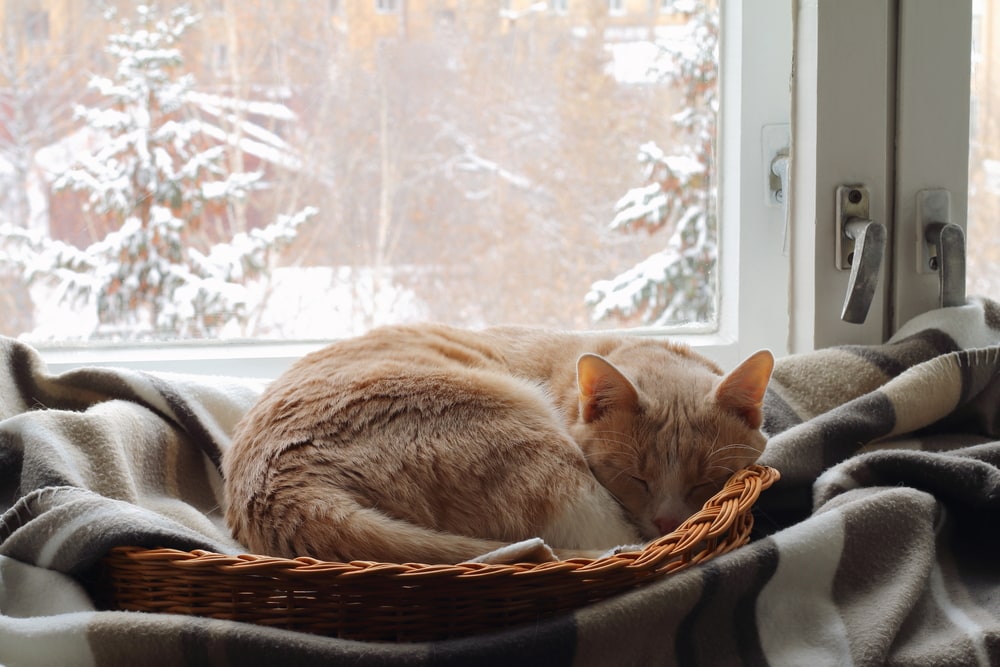
The Bronze Fallow Cockatiel is a mutation of the cockatiel which is itself a part of the cockatoo family. The Fallow mutation means that this breed of cockatiel has red eyes. When they hatch, the Bronze Fallow Cockatiel will have pink eyes. They may darken as the bird ages, or they may remain a lighter pink color.
Plumage can range from Lutino, which is a yellow wash across the whole body, to a soft caramel color. The Fallow is likely to have a yellow wash across the chest and face. The female tends to be more attractive than the female, which is unusual in cockatiel color mutations. The males also tend to be more active and lively, darting around the cage, but the Bronze Fallow Cockatiel will usually display typical characteristics of the cockatiel genus.
They make good pets because they can live up to 20 years and this particular breed has been described as cuddly and even comical. They are considered one of the more outgoing breeds of birds.
Bronze Fallow Cockatiel Overview:
Origin & History
The cockatiel itself is native to Australia. They live close to the water and are nomadic, following water around the arid landscape. Usually living in pairs, the cockatiel may also be seen in small flocks. They have become a popular pet bird because they are easy to keep and, with regular handling, they can be a fun and enjoyable companion.
The Bronze Fallow Cockatiel is a color mutation that is believed to have originated from the USA in the early 1970s. Breeder Mrs. Irma Vowels is widely credited with the intentional breeding of this mutation, which was originally known simply as the Fallow.
Temperament
The cockatiel is considered a good pet bird. He is gentle and can even be considered loving and affectionate with his owners. He is intelligent, and he can even learn a few basic tricks, especially if he finds that he gets a treat as a reward. Tricks can include ringing a bell, climbing a ladder, or hopping onto your finger when it is time for him to get out and spread his wings. Some cockatiels will plead to be stroked, offering their crest or their cheeks to be rubbed.
Males tend to be more vocal than females, strut, and parade more, while females are more likely to be aggressive, although this is by no means guaranteed.
The Bronze Fallow Cockatiel tends to display similar characteristics, but the male can be even more feisty, more vocal, and more prone to darting around the cage.
Speech & Vocalizations
As a member of the parrot family, the cockatiel is a communicator and he has a range of noises to call upon including squeaking, squawking, wolf-whistling, warbling, and chirping. They may also hiss when they are scared or being aggressive. While they cannot mimic the sound of a human voice, they can mimic other noises such as cell phone ringers and alarm clocks.
Bronze Fallow Cockatiel Colors & Markings
The most obvious physical characteristic of the Bronze Fallow Cockatiel is its eyes. These tend to be pink when the bird is young and may get darker as they mature, but they will always remain a pinkish-red color and will look as though they are glowing from the inside out.
The Bronze Fallow may vary in hue from a Lutino that appears white with yellow markings, to a light milk chocolate shade with deep yellow highlights on the face and chest. Other physical differences depend on color mutations. For example, the Lutino has a darker colored pupil and a lighter iris.
- Lutino: White bird with orange cheeks, a yellow mask, and red eyes. When combined with the Fallow mutation, it usually causes darker eye pupils.
- Pied: Yellow or off-white cockatiel and when combined with the Fallow mutation, this leads to lighter pink eyes, rather than red.
If you’re curious about the many color mutations and types of cockatiels, we can’t recommend the book The Ultimate Guide to Cockatiels enough!
This beautiful book (available on Amazon) features a detailed, illustrated guide to cockatiel color mutations, plus helpful tips on housing, feeding, breeding, and generally taking excellent care of your birds.
Caring for the Bronze Fallow Cockatiel
The Bronze Fallow Cockatiel is friendly. With regular handling, in fact, he can be considered loving and cuddly. But not only does he require regular handling out of his cage, but he also needs ambient company, which means that he will benefit from having his cage in the same room as you or others in your house.
Cockatiels are not solitary birds. In the wild, they usually live in small flocks, and as pets, this is also true. They will do well when kept with one or more of their kind. They can be kept in pairs, a hen with a cock, or you can keep a few of the same sex together as a flock.
Considered an intelligent breed, the cockatiel will enjoy having plenty of stimulation in and around his cage. Give him a mirror and the cockatiel is likely to chat to his identical companion for hours on end. Rope ladders and other interactive toys also make very beneficial additions to your cockatiel cage. They can be taught some basic tricks, even if you don’t specifically try to teach them. This means that your bird may learn routines, such as the routine you undergo when feeding, and they will react to these routines.
Common Health Problems
Cockatiels can be affected by bacteria called Chlamydophila psittaci which lead to respiratory problems and even enlarged livers. These bacteria can be passed between cockatiels in their stools.
The internal parasite, giardia, is another common affliction in this breed, and it can cause diarrhea and itchiness. It may lead to your cockatiel violently attacking themselves.
Candida, fatty liver disease, and reproductive problems are common in the cockatiel, as well as in other pet birds and you will need to keep an eye out for typical symptoms.
Diet & Nutrition
All animals, including pet birds, require a suitable balance of carbs, protein, fat, vitamins, and minerals, as well as ongoing access to a fresh supply of drinking water.
In the wild, this breed would naturally consume different types of grass and grass seeds, fruit, some berries, and edible vegetation from their habitat. You should offer a mixture of seeds, but clinically developed pellets may be a better option. Ensure that you choose a good quality pellet, one that has been specifically formulated for feeding cockatiels. These can make up around 75% of your bird’s diet, with the remainder being fed as fruit and vegetables. Do not feed avocado to your bird because it is believed that this is toxic, and you should avoid foods like iceberg lettuce, which are very high in moisture and offer little in the way of nutritional benefit.
Some human food can be fed, in moderation, to your cockatiel, but you need to be sensible when deciding what to feed them. Fruit, vegetable, egg, and even some very lean meat can make a tasty little treat.
Exercise
Cockatiels, like most birds, require regular exercise. Buy interactive toys, such as ladders and toy birds. These encourage general movement and the action of climbing a ladder, for example, exercises some major muscle groups and will help your cockatiel maintain a well-toned physique.
Play with your cockatiel out of the cage. If you can teach him to fetch, this is a great game that will keep you both entertained and will offer decent exercise opportunities for your bird. Remember that your cockatiel is intelligent so he will learn games quickly, but he may also bore of them quickly, so you will have to swap out toys regularly to keep things fresh.
Where to Adopt or Buy a Bronze Fallow Cockatiel
Cockatiels, in general, are one of the smallest members of the parrot family and are widely considered to make excellent pets, especially because they can be fun and loving, too. As such, this means that they are available from plenty of pet shops.
However, this breed will live as long as 20 years, and some people do not realize the commitment required when taking one on. Look for bird rescue organizations, as well as general animal rescues, near you. Look in pet shop windows and check the boards in your local veterinary practice to see if there are any cockatiels in need of a new home and a loving family. You may even find some online.
Final Thoughts
The cockatiel’s small size, friendly nature, and charming manner make them a good choice as a family pet. They are relatively easy to care for, although they do need regular handling and benefit from companionship provided by other birds or by human family members. The Bronze Fallow Cockatiel has a unique appearance, especially in his red eyes, that makes him even more striking a bird.
Featured Image Credit: kikumin, Shutterstock









